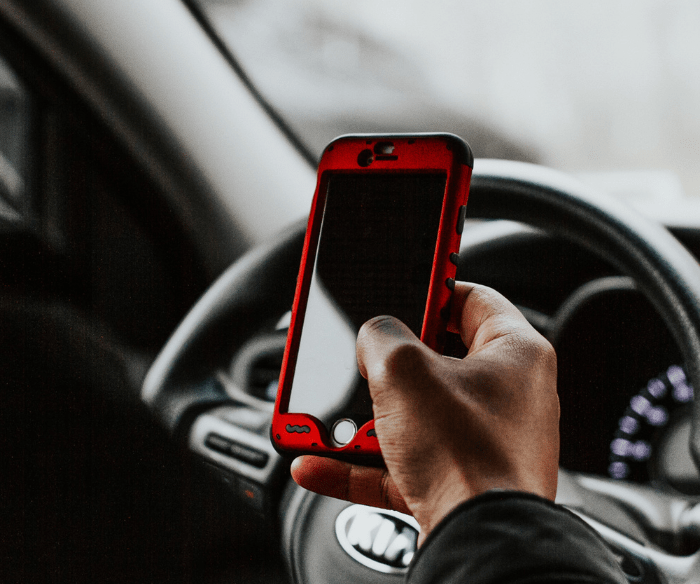When preparing to earn your driver license, consider taking a test with confidence. Make sure to bring your driver’s license when you go to the California DMV., one of the most overlooked yet crucial factors is the timing of your test. Many learners focus on studying the rules of the road, mastering parallel parking, and logging hours of driving experience, but few consider how the timing of your test can significantly impact your performance.
Whether you’re taking your behind-the-wheel drive test for the first time or retaking it after a previous attempt, choosing the right time to take your test can significantly improve your chances of passing.
In this guide, we’ll explore the best time to take a road test, breaking it down by days of the week, time of day, seasons, and personal factors. We’ll also provide actionable tips on scheduling your road test and how to avoid the worst times to take your driver’s test.
Optimal days to take your driver’s test
Best days: Tuesday to Thursday
If you’re aiming for the best time to take your driving test, mid-week is often considered the best. Tuesday to Thursday usually feature lighter traffic, more organized DMV offices, and less fatigued examiners. The weekday rush that typically affects Mondays and Fridays isn’t as pronounced.
DMV examiners are more relaxed, well-rested, and less overwhelmed with paperwork or last-minute cancellations during mid-week. As a result, you’re more likely to encounter heavier traffic on the wrong day for your test. behind-the-wheel test experience that’s focused and fair.
Days to avoid: Monday and Friday
Mondays and Fridays are commonly associated with heavier traffic, especially if you have limited time to take a test. heavy traffic due to start-of-week and end-of-week commuter patterns. DMV examiners may also be more stressed or fatigued, especially on Fridays when they’re nearing the weekend. The combination of rush hour traffic, longer wait times, and possible examiner burnout can negatively impact your performance.
Best time of day for your road test
Early morning (7 AM – 9 AM)
This is often considered the best time to take a road test. Traffic is typically lighter, especially before peak rush hour, and DMV examiners tend to be fresh and alert.
If you’re a morning person or someone who feels sharp first thing in the morning, this optimal time can give you a distinct edge. Many drivers who take their test during this window report smoother experiences.
Mid-morning (9 AM – 11 AM)
Still a great time to take your test, this window offers balanced traffic conditions and alert DMV examiners. While there may be a slight increase in congestion, it’s generally manageable and far from the extremes of rush hour.
Times to avoid
- Lunchtime (11 AM – 1 PM): This period sees a spike in traffic due to lunch breaks. Examiners may also be distracted or fatigued.
- Afternoon (2 PM – 4 PM): Approaching evening rush hour, traffic becomes more unpredictable. Examiner patience may also wane, which can affect how they assess your driving skills.
Why Timing Matters for Your Driving Test
The timing of your test can directly affect factors like traffic conditions, examiner mood and alertness, and even weather conditions. These elements can impact your performance, especially if you’re a nervous or inexperienced driver.
You might be surprised to learn that something as simple as choosing the wrong time slot or day of the week can lower your chances of passing. So before you head to the DMV, make sure your test timing sets you up for success.
Seasonal considerations
Best seasons: Spring and summer
Better weather conditions, longer daylight hours, and generally improved road visibility make spring and summer the best time to take your test. Not only does good weather make driving easier, but it also puts both examiners and learners in a better mood.
These seasons are ideal for test scheduling, especially if you’re anxious about poor visibility can lead to dangerous situations, especially when preparing for your knowledge test. or slippery roads.
Seasons to avoid: Winter
Winter is a difficult time to navigate heavier traffic while trying to take my road test. take your driver’s test due to poor weather conditions can significantly affect your chances of passing the driving test at the California DMV. such as snow, ice, and fog. These seasonal weather conditions can significantly impact your performance, especially if you have limited experience, it’s crucial to choose a test day wisely. night driving experience or struggle in less favorable environments.
Personal factors that influence your ideal test time
Choosing the right time also depends on personal schedule, alertness, and familiarity with traffic patterns:
- When are you most alert? If you’re sharper in the morning, don’t schedule your test in the late afternoon.
- Do you know the route to take my road test? Some DMV test routes are easier to navigate at certain times due to local traffic laws and safety issues.
- What’s your comfort level with traffic? If you’re still gaining confidence, avoid scheduling your test in NY during peak hours. rush hour or poor weather windows that could rattle your nerves.
Make sure your comprehensive driving preparation includes test simulations at the same time of day you plan to take the test.
Tips for scheduling your road test
Successfully scheduling your road test requires early planning. Here are tips to help you prepare and improve your chances of success:
- Book your driving test early preparation can help you feel ready to take your knowledge test. DMV test slots fill up fast, especially during peak seasons like summer.
- Avoid school dismissal and rush hour periods.
- Monitor weather forecasts—you don’t want to be caught in rain or snow on the right day for your test with confidence.
- Review test requirements from your state’s department of motor vehicles to make sure you’re ready.
- Practice the rules of the road under similar circumstances, it’s best to choose a test day with favorable weather conditions. traffic conditions and weather conditions you’ll face on test day.
Additional resources to help you pass
To ensure you’re truly ready for your driver’s license, consider taking a defensive driving course. These programs can sharpen your awareness, confidence, and ability to handle unpredictable situations.
- Learn more about what is defensive driving.
- Explore the best training options and pricing for driving school can vary depending on whether you are preparing to take a test.
- Discover the best strategies to pass your knowledge test at the California DMV. how often can you take defensive driving and what it means for your record.
- Find out how long is defensive driving course to plan your schedule accordingly.
- For new drivers, understanding what is drivers ed is a great first step toward test readiness.
Completing a formal driver education program can not only help you pass your test but also improve your long-term safety and confidence behind the wheel.





